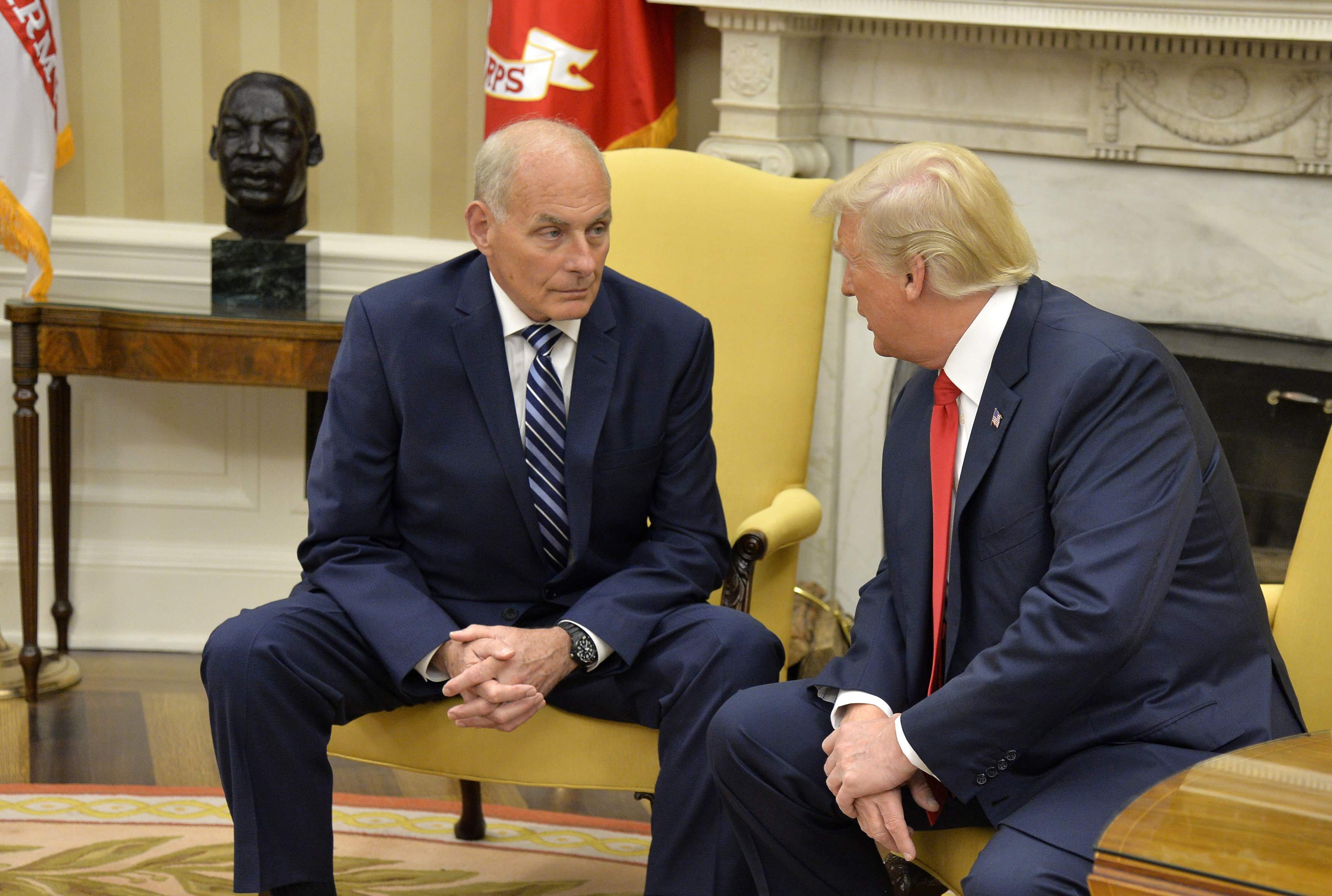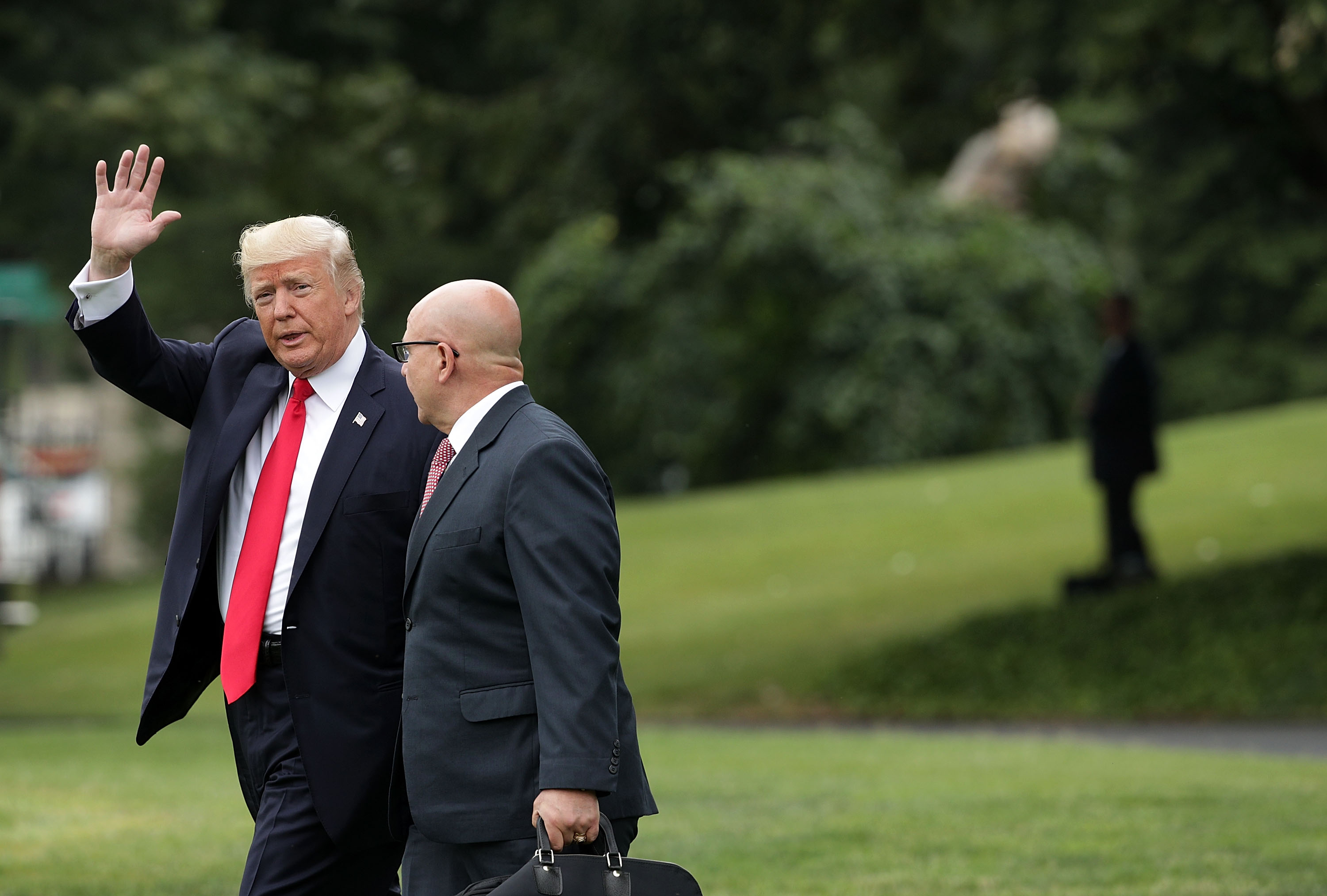
(Photo: Mike Theiler-Pool/Getty Images)
The peaceful transition of power is a central tenet of American democracy; it was also normalized following one of the the dirtiest elections in the history of the country. In the “Peaceful Revolution of 1800,” Thomas Jefferson’s Republican Party seized the presidency and both houses of Congress. But unlike the bloody French Revolution, the seizure itself was an entirely peaceful and orderly one. And if there was ever the equivalent of a bloodless military coup in the centuries since, we’re watching it unfold before our eyes.
Last month, President Donald Trump suddenly replaced Chief of Staff Reince Priebus with retired Marine General John Kelly. The shake-up made Kelly the fourth general to ascend to the highest echelons of the executive branch of the Trump administration, following Secretary of Defense James Mattis, Chairman of the Joint Chiefs of Staff General Joseph Dunford, and National Security Advisor H.R. McMaster. These men are all good chums—Mattis and Kelly recommended each other for Secretary of Defense back in November, and Dunford is apparently one of Kelly’s closest friends. Their combined presence also constitutes a military power unprecedented in decades; there haven’t been this many generals in the executive branch since World War II.
Trump, using the power of the Appointments Clause under Article II of the Constitution, can appoint whomever he wants to whatever post he wants. But by surrounding himself with “the generals,” Trump may have inadvertently allowed this coterie of military leaders to reshape the White House.

(Photo: Jonathan Ernst – Pool/Getty Images)
As chief of staff, Kelly is now the gatekeeper to Trump and the head of the Executive Office of the President, meaning he exercises complete authority over the commander-in-chief’s advisers—authority he’s already put to use to contain Trump. In less than a week, Kelly has dispatched White House Director of Communications Anthony Scaramucci and assured Attorney General Jeff Sessions of his job security. And, according to Axios, Kelly is imposing order on an unruly West Wing with Mattis-level maneuvering; the president himself is even “trying to impress his four-star handler, picking up his game by acting sharper in meetings and even rattling off stats,” according to Axios.
But the Kelly clampdown has also coincided with a two-pronged campaign to restore stability in the executive branch’s national security apparatus. In June, Trump formally gave Mattis “full authority” to determine troop levels in Afghanistan. Mattis and then-Secretary of Homeland Security Kelly even made a secret pact to babysit the president during his time in office, with one of the generals “remain[ing] in the United States at all times to keep tabs on the orders rapidly emerging from the White House,” according to the Associated Press.
The other prong of attack came from McMaster in what’s being characterized in conservative circles as a “purge” on the National Security Council of Trump loyalists handpicked by Steve Bannon to shape the president’s national security apparatus. On August 2nd, McMaster reportedly fired Senior Director for Intelligence Ezra Cohen-Watnick, a Michael Flynn holdover reportedly protected by Jared Kushner and Bannon. Just a week before, McMaster fired top Middle East aide Army Colonel Derek Harvey, also a Flynn staffer, in favor of “his own guy” per Politico. And, on July 21st, McMaster ousted Director for Strategic Planning Rich Higgins. According to an August 3rd report in the Washington Free Beacon, McMaster isn’t done ousting Trump’s faction of Bannon loyalists.

(Photo: Alex Wong/Getty Images)
This is not just about getting rid of Flynn relics like K.T. MacFarland; it’s an institutional return to normalcy after months of far-right effort to radically transform decades of institutional memory. Bannon staked his role in the administration on the “deconstruction of the administrative state,” even going so far as establishing a “Strategic Initiatives Group,” a shadow forum within the executive branch designed to undermine the traditional NSC. (The SIG was dissolved after Bannon was booted from the NSC’s principals committee in April.) Cohen-Watnick, the now-former intelligence director, was implicated in collaborating with Representative Devin Nunes (R-California) in the House Intelligence Committee’s investigation into Russia’s role in the 2016 presidential election. And Higgins was reportedly canned after publishing an unhinged memo claiming that Trump was “under sustained attack from subversive forces both within and outside the government … including globalists, bankers, the ‘deep state,’ and Islamists,” per The Atlantic.
McMaster’s NSC purge, taken in the context of Kelly’s crackdown on the Oval Office, reflects the exact strategy of containment that the latter discussed with Mattis in the early weeks of the administration. As Kelly is jousting with Trump’s political family (and, in some cases, his literal family), McMaster is cleaning house of the ideologues who feed Trump’s own quixotic impulses. All the while, Mattis and Dunford are working to keep America’s enemies at bay. Gone is the governmental inexperience and ideological blindness that marred the first six months of the Trump administration.
Trump will remain ensconced in the Oval Office, and he will continue to clash with his generals. See: the tense July 19th meeting, when he recommended Dunford and Mattis fire General John Nicholson, currently leading efforts in Afghanistan; Dunford and Mattis attempted to talk Trump down before Mattis reportedly left the meeting “upset” after Trump indicated he preferred the input of rank-and-file soldiers over “lousy” generals. But just as Abraham Lincoln battled with George McClellan (and Barack Obama with “Runaway General” Stanley McChrystal), the generals have arrived to counterbalance their commander-in-chief—and they’re not going anywhere.





